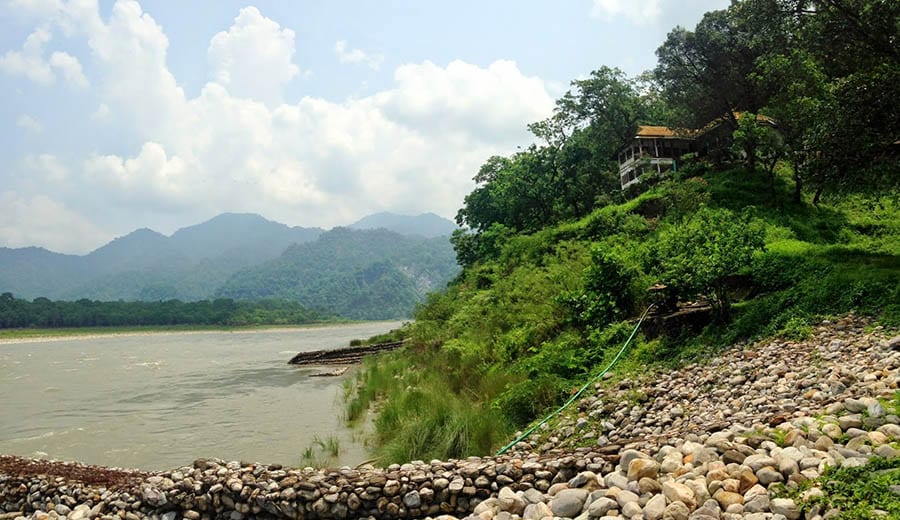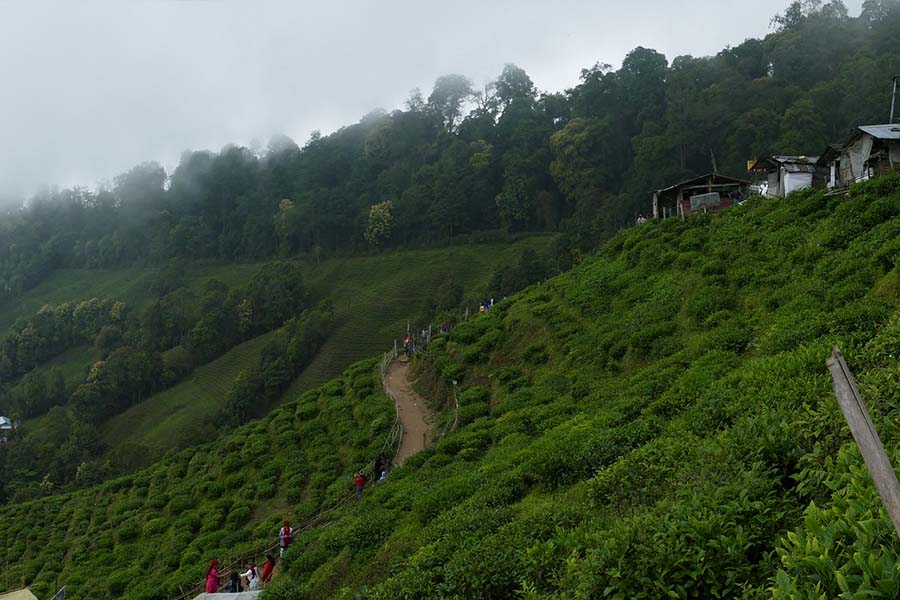Manas National Park
Manas National Park is a wildlife reserve in Assam, India. It was declared a UNESCO Natural World Heritage site in 1985. It covers an area of 950 sq km and is known for its diverse flora and fauna, including rare and endangered species such as the one-horned rhinoceros and the golden langur. The park is also known for its scenic beauty, with the Manas River flowing through it and offering opportunities for rafting and fishing.
Things to do at Manas National Park, each topic write details
- Wildlife viewing: Manas National Park is a haven for wildlife enthusiasts, with a wide range of species to observe, including tigers, elephants, rhinos, and many types of birds. Guided jungle safaris are available to help visitors spot wildlife and learn about the park’s ecology.
- Trekking: Manas National Park offers a variety of trekking routes, ranging from easy nature walks to more challenging hikes. Visitors can explore the park’s scenic beauty, including waterfalls, hot springs, and diverse vegetation, as well as spot wildlife along the way.
- Rafting and fishing: The Manas River flows through the park, offering opportunities for rafting and fishing. Visitors can enjoy a leisurely float down the river, fishing for trout and other species, or take a more thrilling whitewater rafting trip.
- Bird watching: With over 450 species of birds, Manas National Park is a birdwatcher’s paradise. Visitors can go on guided birdwatching walks to see species such as the Bengal florican, vultures, and hornbills.
- Cultural experiences: Manas National Park is surrounded by a number of traditional villages inhabited by indigenous communities, including the Bodo people. Visitors can learn about the area’s rich culture and history through guided village walks and cultural shows.
- Accommodation: Manas National Park offers a range of accommodation options, including eco-friendly lodges, camping sites, and guesthouses, which allow visitors to experience the park’s beauty in comfort.
History of Manas National Park
Manas National Park is located in the northeastern state of Assam, India, and has a rich and complex history. The park was established in 1990 and declared a UNESCO Natural World Heritage Site in 1985. It was originally established as a sanctuary in 1928 to protect the area’s unique and diverse flora and fauna.
During the 1980s and 1990s, the park was affected by political instability and civil unrest in the region. The park suffered extensive damage during this time, including habitat destruction, poaching of poachers, and loss of wildlife. The park was also closed for several years due to safety concerns.
In recent years, the park has undergone extensive restoration efforts, including habitat restoration and anti-poaching measures. These efforts have helped to restore the park’s wildlife populations and attract visitors from around the world. Today, Manas National Park is a popular destination for wildlife enthusiasts, bird watchers, and adventure seekers, offering opportunities to experience the region’s rich culture, scenic beauty, and diverse wildlife.
Flora and Fauna in Manas National Park
Manas National Park is known for its rich and diverse flora and fauna. Some of the notable species found in the park include:
Flora:
- Sal tree
- Bamboo
- Elephant grass
- Orchids
- Medicinal plants
Fauna:
- One-horned rhinoceros
- Bengal tiger
- Asian elephant
- Golden langur
- Clouded leopard
- Hoolock gibbon
- Capped langur
- Wild buffalo
- Swamp deer
- Various species of birds, reptiles, and amphibians
The park’s diverse habitats, ranging from tropical forests to grasslands and wetlands, provide a home for a wide range of species and support a complex food web. Manas National Park is also known for its significant role in conserving several rare and endangered species, including the one-horned rhinoceros and the golden langur.
Safari Activities & Timings in Manas National Park
Manas National Park offers a variety of wildlife viewing and trekking activities for visitors, including:
- Jungle Safari: Guided jungle safaris are available in the park to help visitors spot wildlife and learn about the park’s ecology. The best time for wildlife viewing is early in the morning and late in the afternoon when animals are most active.
- Trekking: Manas National Park offers a variety of trekking routes for visitors to explore the park’s scenic beauty and spot wildlife. Trekking is available throughout the day, with early morning and late afternoon being the best times for wildlife viewing.
- Birdwatching: Manas National Park is a birdwatcher’s paradise, with over 450 species of birds. Guided birdwatching walks are available to help visitors spot species such as the Bengal florican, vultures, and hornbills. The best time for birdwatching is early in the morning when birds are most active.
Park visiting hours: The park is open to visitors from November to April, with the park gates open from 5 am to 5 pm. The park is closed during the monsoon season (May to October) for maintenance and to allow for the regeneration of the park’s vegetation.
Note: The park’s activities and timings may vary depending on seasonal changes and park policies, so it is advisable to check with park authorities for the most up-to-date information.
How To Reach The Park
Manas National Park is located in the northeastern state of Assam, India, and can be reached by various modes of transportation. Some of the ways to reach the park include:
- By Air: The nearest airport to Manas National Park is Lokpriya Gopinath Bordoloi International Airport in Guwahati, which is about 160 km away. From the airport, visitors can take a taxi or bus to reach the park.
- By Rail: The nearest railway station to Manas National Park is Barpeta Road Railway Station, which is about 30 km away. From the station, visitors can take a taxi or bus to reach the park.
- By Road: Manas National Park is well connected by road and can be reached by taxi or bus from Guwahati, Tezpur, and other nearby cities. Buses and taxis are available from Guwahati to Barpeta Road, from where visitors can take a local vehicle to reach the park.
Note: Visitors are advised to check with park authorities for the most up-to-date information on transportation options and to plan their journey accordingly.
Best time to visit
The best time to visit Manas National Park is from November to April, during the winter and spring seasons. During this time, the weather is pleasant and the park’s flora and fauna are easily visible. This is also the peak tourist season and the best time for wildlife viewing and trekking activities.
The monsoon season (May to October) is not recommended for visiting Manas National Park as the park is closed during this time and the heavy rainfall can make it difficult to spot wildlife and engage in outdoor activities.
Note: Visitors are advised to check with park authorities for the most up-to-date information on weather conditions and park policies before planning their visit.
Nearby attractions
In addition to Manas National Park, there are several nearby attractions that visitors can explore while in the area, including:
- Bhabar Gandhi Ashram: This historic ashram was the birthplace of Mahatma Gandhi and is now a museum dedicated to his life and legacy.
- Majuli Island: The world’s largest river island, Majuli is a unique cultural and ecological destination that offers scenic beauty, traditional crafts, and a rich heritage of Assamese culture.
- Pobitora Wildlife Sanctuary: This wildlife sanctuary is located nearby Manas National Park and is known for its population of one-horned rhinoceros.
- Sualkuchi: A traditional weaving village known for its production of Assam silk, Sualkuchi offers a glimpse into the state’s rich cultural heritage.
- Assam State Museum: This museum in Guwahati showcases the rich cultural heritage and natural history of Assam, including exhibits on the state’s diverse tribal communities, flora, and fauna.
Note: Visitors are advised to check with local authorities for the most up-to-date information on nearby attractions and to plan their itinerary accordingly.



